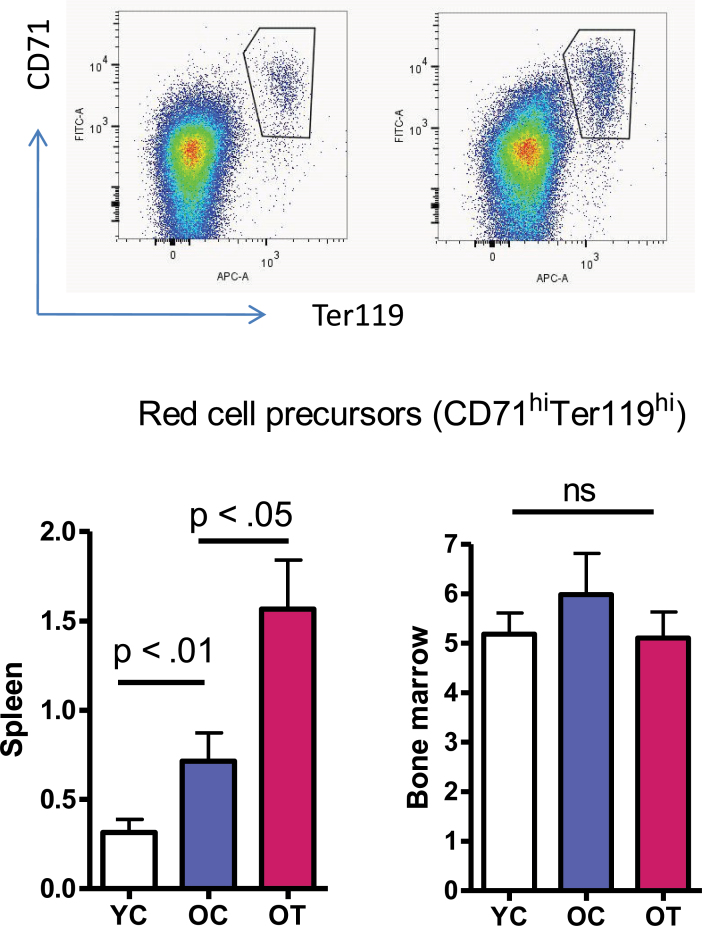Figure 5.
Age and testosterone differentially increase the percentage of late-stage erythroid progenitors (Cd71+Ter119+) in the spleen but not in the bone marrow. Upper panel: representative cell distribution patterns in spleen (left) and bone marrow (right) after costaining with anti-CD71 and anti-Ter119. Cells stained positive for both CD71 and Ter119 were gated as late-stage erythroid progenitors. Lower panel: the percentage of late-stage erythroid progenitors in spleen (left) and bone marrow (right). Results are mean ± standard error of mean, N = 7 for each group. Data were analyzed by one-way analysis of variance followed by Tukey’s test. Y, young adults; O, older mice; C, vehicle; T, testosterone; ns, nonsignificance.

